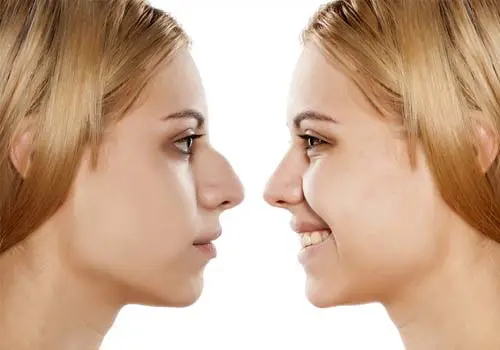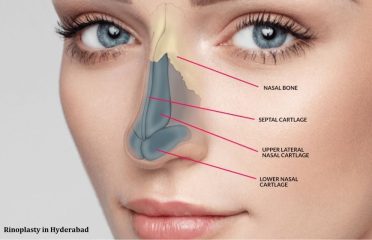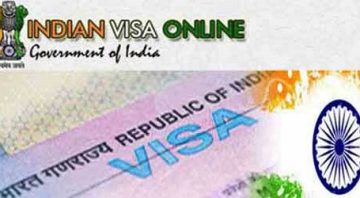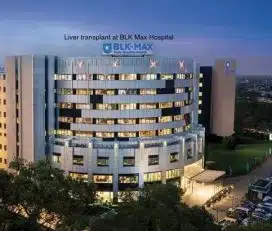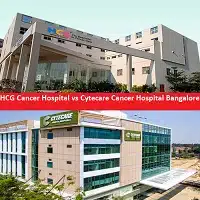The cost of Rhinoplasty surgery in Hyderabad is as follows:
| Surgery Name |
Minimum Price (Indian Rupees) |
Maximum Price (Indian Rupees) |
Average Price (Indian Rupees) |
| Rhinoplasty |
₹ 65,000 |
₹ 95,000 |
₹ 75,000 |
The Cost of Rhinoplasty surgery may vary according to the following factors:
- Doctor’s Fee
- Hospital charges
- Medical condition after Rhinoplasty surgery
- Type & Quality of Implants/Consumables
- Lab Tests recommended post-Rhinoplasty
Defects that can be corrected for Rhinoplasty surgery
The large majority of operations are conducted under general anesthesia, i.e. the patient is unconscious and unaware of the operation being performed. If the anesthetic has been administered, the surgeon begins by exposing the nasal structure and making the necessary adjustments.
Each patient has a different set of symptoms involving different manipulations of their nasal system. For instance:
Dorsal Hump – Treated by bone reduction and part reduction of the upper lateral cartilage. It may also require lateral osteotomy to further refine the bone pyramid of the nose.
Saddle Nose-The nasal dorsum is shallow and concave. These patients have a depressed bone vault and a cartilaginous vault together with a defective septum. They may or may not have airway obstruction. Such a condition may arise by birth (Binder Syndrome) or may be caused by accident, septic surgery, etc. The treatment of these deformities includes the reconstruction of the septum with cartilage grafts and the increase of the dorsum with cartilage grafts. These grafts are taken from the patient’s ear (conchal cartilage) or ribs (costal cartilage grafts). These cartilages are surgically shaped to meet the specifications and are fixed in place.
Crooked nose-These noses are deviated or bent and exhibit visible asymmetries. This problem may be congenital or acquired due to injury.
Underlying structural deformities such as-Curved or ‘s’ shaped septum, asymmetrical cartilage attachments, asymmetrical proportions, and lower lateral cartilage strength are typically identified. The procedure is aimed at fixing deformities and restoring symmetry.
Other issues found in the nose include the short and over-turned nose, the drooping tip of the nose, retracted alae, retracted columella, etc. These deformities are properly treated during rhinoplasty.
Septoplasty is a common component of rhinoplasty, especially when dealing with crooked or deviated noses. This can help a patient suffering from concomitant airway obstruction.
Patients suffering from saddle noses and airway obstruction benefit from a septic reconstruction that is performed as part of their rhinoplasty.
Procedure for rhinoplasty surgery
There are a few different ways to perform Nose Job or Nose Surgery, that is, a closed technique and an open technique.
Many Cosmetic Rhinoplasty surgeons in Hyderabad prefer open rhinoplasty because this technique allows them gain a better view of the inside of the nose as well as greater access to its supporting structures. The incision is made between the nose or under the nose close to the nose.
As this incision is made, the skin is pulled back and the bones, cartilage, and tissue within the nose are exposed so that reshaping and reconstruction can occur.
If the incisions have been closed, scarring is slight and can not be seen. Closed rhinoplasty is less invasive than that. It is usually used when only mild reshaping is required, or when the tip of the nose is addressed.
Aftercare Rhinoplasty surgery
- Try to sneeze through your mouth and not blow your nose for the first 2 to 3 weeks after surgery.
- Secure your nose from damage or trauma of some sort.
- Sleep straight and keep your head lifted with the help of your pillows for a week after surgery.
- Do not add pressure to the nasal splint.
- Do not wear spectacles for a couple of weeks after surgery.
- Wear comfortable, loose clothing that opens in the front.
- Avoid behaviors that can increase blood pressure during the first few weeks of surgery.
- After 5-6 weeks, you can start your cardiovascular activities and walk easily.
- Do not experience undue force or abrasion at the incision site.
- Don’t scratch the treated area.
- Take the oral medication as prescribed.
- Do not use intense teeth brushing.


